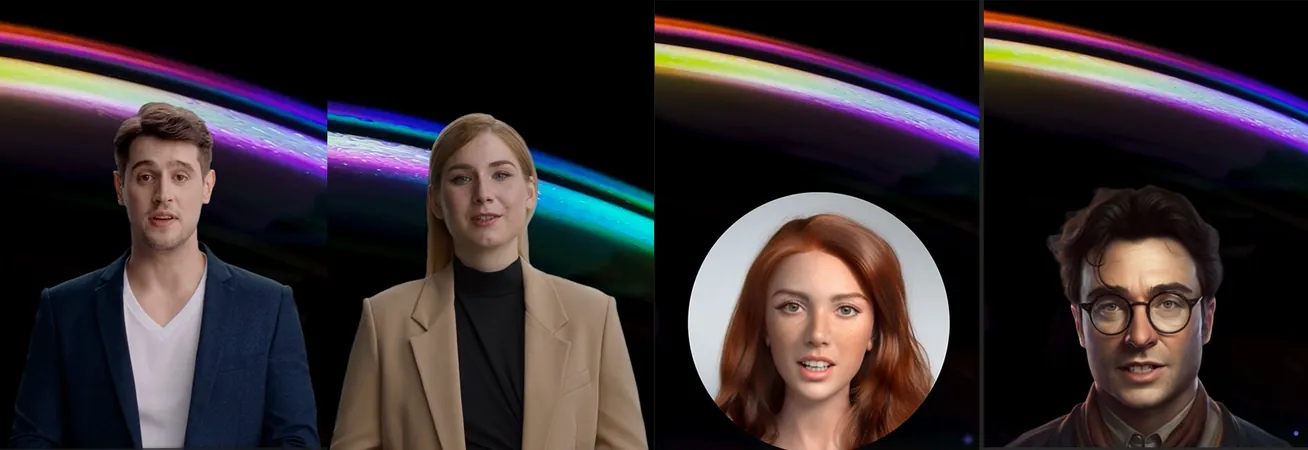
Realistic Avatars Outshine Cartoons in Building Trust in Science Communication
2025-04-15
Author: John Tan
On TikTok, you’ll find advanced "testimonials" from legendary figures like Nikola Tesla and Marie Curie sharing bite-sized science wisdom that has captured millions of views. These AI-generated avatars are revolutionizing the way science is communicated, but there’s a catch.
As the technology behind creating lifelike images and animations advances, it’s becoming clear that even realistic avatars can suffer from subtle flaws—like glitches or awkward facial expressions—that viewers might not easily overlook.
The Uncanny Valley Effect—A Double-Edged Sword
Jasmin Baake, a researcher at the Center for Advanced Internet Studies in Bochum, Germany, along with her team, has explored how these avatars can fall victim to the "uncanny valley" phenomenon. This cognitive science concept suggests that when humanoid avatars are almost, but not quite, lifelike, they can evoke discomfort in viewers. In contrast, cartoonish avatars might not trigger the same level of unease.
Can Realism Boost Trustworthiness?
Intrigued by how the human-like features of AI avatars affect credibility, Baake and her colleagues set out to investigate this. "We aimed to understand how the realism and gender of these avatars impacted viewer trust," Baake explained.
The study featured a series of videos showcasing AI-generated science communicators of varying realism (from hyper-realistic to cartoonish) and gender, involving nearly 500 participants representative of the German population.
Unexpected Results—Realism Wins!
Contrary to their initial assumptions, the researchers discovered that realistic avatars were viewed more positively than their cartoon counterparts. After watching the videos, participants were asked to evaluate the avatars on competence, integrity, and benevolence—all traits that reflect trustworthiness.
The findings revealed that realistic avatars received higher ratings across all dimensions. While male avatars were still perceived as more competent, gender did not significantly affect views on integrity or benevolence.
Trust in AI Avatars—What Does It Mean?
Baake noted, "We didn’t observe a descent into the uncanny valley with increased realism in our study conditions." Additionally, personal factors—like the audience’s prior knowledge of AI and their trust in science—played a role in how trustworthy the avatars were perceived.
This study positions realistic, human-like avatars as effective tools for engaging audiences in scientific discourse, indicating a shift in how we might utilize AI for educational purposes.


 Brasil (PT)
Brasil (PT)
 Canada (EN)
Canada (EN)
 Chile (ES)
Chile (ES)
 Česko (CS)
Česko (CS)
 대한민국 (KO)
대한민국 (KO)
 España (ES)
España (ES)
 France (FR)
France (FR)
 Hong Kong (EN)
Hong Kong (EN)
 Italia (IT)
Italia (IT)
 日本 (JA)
日本 (JA)
 Magyarország (HU)
Magyarország (HU)
 Norge (NO)
Norge (NO)
 Polska (PL)
Polska (PL)
 Schweiz (DE)
Schweiz (DE)
 Singapore (EN)
Singapore (EN)
 Sverige (SV)
Sverige (SV)
 Suomi (FI)
Suomi (FI)
 Türkiye (TR)
Türkiye (TR)
 الإمارات العربية المتحدة (AR)
الإمارات العربية المتحدة (AR)